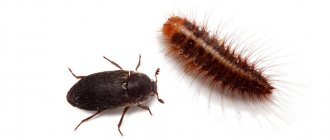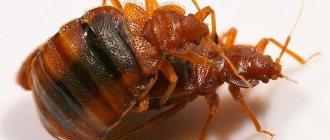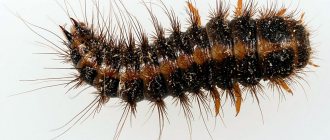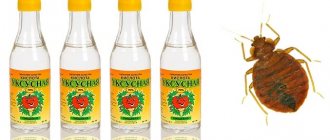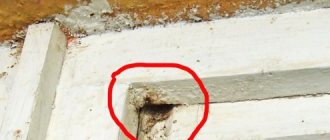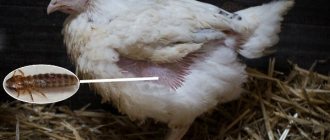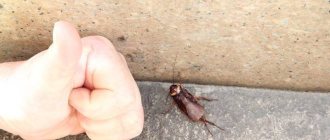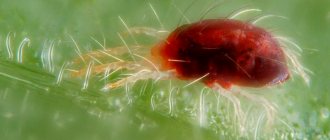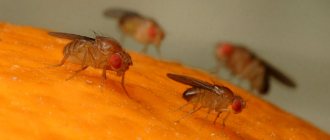- Who is the skin beetle?
- The carpet beetle bites
- Types of carpet beetles Kapra beetle
- Spotted leather beetle
- Ham skin beetle
- Fur coat beetle
- Carpet beetle
- Brown leather beetle
- Smirnova beetle, Frisha, flower beetle
Eaten fur coats, boots, jackets, furniture chewed through labyrinthine passages and many other damaged things in the house. This is due to an unfamiliar tenacious and voracious beetle - the fur coat beetle. This is a common and dangerous pest that lives in apartments and houses and is difficult to get rid of.
Who is the skin beetle?
Nature is inhabited by 600 species of leather beetles, which are classified as coleopteran insects. 7 species are dangerous pests.
The bugs are not small - the body length is 0.3-1.2 cm, on which hairs or stripes are visible. Color black, brown or spotted. The speed of movement is low, it flies weakly, if you touch the bug, it will turn over with its paws up. The voracious brown larvae are covered with long hairs.
Skin beetles are attracted to human housing by dry air, available food and polluted premises. The food of skin beetles is animal and plant organic matter; they easily chew through paper and plastic packaging. In human homes, bugs feed on natural fabrics, wood and food scraps.
The “children” of the leather beetle eat non-stop, feeding on fur, down and leather, wool, silk and felt. They chew books, cables, and feed on wallpaper and parquet. These insects are carriers of infection, parasitic worm eggs, and also bite, leaving red spots on human skin.
Skin beetle lifestyle
In May, a new generation of pests appears. At this time, the females begin to mate and lay eggs. Female insects leave behind large offspring. During their life they lay over 4,100 larvae. To do this, they look for secluded places with food supplies. They mostly choose rooms that are poorly ventilated.
It can be:
But in the process of obtaining food, they can also get into a person’s home.
Adults practically do no harm to humans. For the most part, their main source of nutrition is plant sap. Voracious insects love warmth. They prefer dry places with dim lighting.
The carpet beetle bites
The bite of the skin beetle is painful and often dangerous - infection with parasites. For people with sensitive skin it will appear as bright red spots, for others it will appear as small harmless dots. The larvae spread the viral infection wherever they crawl. To get rid of it, you need to clear the room of both the bug and the eggs.
Skin beetle bites are painful for children and women. If a skin beetle has bitten you, use a disinfectant or hydrogen peroxide or alcohol to treat the bite site. An allergic reaction is relieved with an antihistamine. For quick healing, use a moisturizer if there is no infection. If inflammation appears, you should see a doctor.
Signs of appearance
How to determine the presence of a skin beetle in an apartment? This insect cannot always be identified. However, it is worth considering that the bugs themselves are difficult to identify, but they usually gather in colonies.
The main habitats of insects can be the following:
- near heating devices;
- under baseboards;
- area of wardrobes, beds
- carpets.
After the beetle chooses a suitable habitat, it begins the process of active reproduction. Females can lay up to hundreds of eggs in places where there is enough food and the necessary climatic conditions for further development.
The skin beetle larva begins to hatch within a month; the optimal period is 55 days. This is where she begins to cause great harm. The larva's menu includes the following food items:
- fabrics made from natural fibers;
- leather material and products made from it;
- fur coats;
- furniture;
- books;
- food.
It is worth considering that skin beetles are dangerous to humans, or rather their bites. They can be very painful and can sometimes trigger allergy symptoms. In addition, through a skin beetle bite you can sometimes become infected with various infectious diseases, as well as helminths.
Types of skin beetles
To recognize the dangerous pests in the bugs crawling around your apartment, it is worth learning about the common types of skin beetles.
Kapra beetle
The nylon beetle (also called the grain beetle) has a 3 mm oval brown body and light hairs. The 5 mm larvae have red-brown hairs. For habitat it chooses cereals, nuts and dried fruits, loves meat and cheese products. The beetle is a carrier of infection. Lives more often in warm climates.
Spotted leather beetle
The spotted beetle is a leather beetle with an elongated light brown body of 9 millimeters. The larvae have a brown back, reddish-brown head and hairs.
The spotted skin beetle chooses the corpse of a mammal to live in; these bugs clean the bones for the museum. In the apartment, the larvae eat meat, fish, cheese, and milk powder.
Ham skin beetle
Ham skin beetles are oblong, a centimeter long, black in color with yellow hairs, and equipped with gray-yellow wings. The dark brown larvae have brown hairs on their bodies.
They choose open food products and do not refuse to chew wooden objects. The insect is prolific and easily penetrates living spaces.
Fur coat beetle
Harmless fur coat beetles choose dusty apartments because dust is food for them, just like human food. Doesn't eat fur coats. Oval, 6 mm body with a black head and chest, and brown elytra with white hairs or spots.
Carpet beetle
For 2-5 mm carpet beetle larvae, the treat includes carpets, dead human skin particles on bedding, crumbs, cat hair, as well as fur, skin and dust.
In addition, the larvae feed on feathers and down from pillows. The bug is brown or black in color; the adult insect uses up the reserve accumulated in the larval stage for life.
Brown leather beetle
The museum leather beetle, also known as the brownie, chooses indoor flowers and books for its habitat. Having settled in the museum, he chooses stuffed animals, leather book bindings, natural fabrics and paintings. Rarely found in residential areas. A beetle with an oval body of 3.5 mm, with black elytra and yellow hairs.
Smirnova beetle, Frisha, flower beetle
The 3 mm Smirnov beetle has a brown back. For living he chooses old wooden window frames and window sills.
Frisch's little black beetle rarely settles in apartments. If it appears, it chooses food.
The flower beetle is found on garden plants.
Why is the leather beetle dangerous?
The beetle is gluttonous and not picky about food. It multiplies quickly, becoming a threat to even large stocks of food and fur. The pest is dangerous for museum exhibits, furniture, books and ornamental plants. The animal can even eat glue, concrete and plastic. Therefore, when settling next to a person, the pest often damages property.
Carpet beetles in a house or apartment usually feed on the following things:
- leather and fur products;
- wooden window sills and frames;
- meat and dried fish;
- cereals;
- home flowers.
The main problem is that in the early stages of infection it is very difficult to notice the pest population. In most cases, beetles are dealt with only after significant damage to property has been caused. The carpet beetle hides well and avoids contact with humans. It is often confused with other beetles and is not mistaken for a dangerous pest.
Can a skin beetle bite a person?
The name of the beetle often evokes fear in people. There are many legends that these insects feed on human skin. However, none of the myths are true. It is important to understand that the skin beetle eats only dead animals. Although leather and fur are a favorite treat for most species, they do not attack living creatures even of their own size or smaller. This is justified by the fact that the jaws of beetles are simply not adapted to such a lifestyle. An insect cannot bite through the skin of animals or humans.
However, it should be borne in mind that the natural secretions of the pest can cause an allergic reaction. It usually manifests itself as mild redness of the skin. Swelling is less common. But such an allergy does not pose a threat to human life and rarely causes serious discomfort. It manifests itself mainly from touching beetles or objects on which they feed.
It is important to pay attention to the fact that due to its lifestyle, this beetle carries a huge number of diseases. Any food touched by an insect can pose a threat to humans. Infection often occurs through scratches and wounds. For this reason, if such a pest is present, you should spend more time treating cuts and other skin injuries.
How the leather beetle gets into human housing
In warm weather, bugs secretly penetrate into the apartment, where it is often trashy and dirty:
- They fly into an open window or window;
- Hiding in purchased furniture from an infected room, clothes and shoes;
- With indoor plants or on a bouquet;
- Brought in by shoes or clothes when coming from the street;
- Food contaminated with larvae is brought into the apartment;
- They will crawl from the balcony, use cracks, ventilation or garbage chutes.
Where can you find them indoors?
There are many places in living quarters where the skin beetle hides. The pest nests in warm and dry areas:
- mattress;
- upholstery of upholstered furniture;
- kitchen area;
- next to the batteries.
It is difficult to detect beetles in an apartment. They prefer to hide in hard-to-reach places:
- under baseboards;
- in the air space between the wallpaper and the wall.
Bugs can multiply in window frames (wooden), in window sills, and pots with plants.
How does the skin beetle reproduce and develop?
The development of the larva to an adult insect lasts 12 months.
The female beetle lays eggs in cracks and on top of objects 5 times a year, over 100 eggs in a lifetime. The larvae hatch in 2-50 days, this is influenced by dry air and temperature - the warmer and drier, the sooner the appearance.
The larva molts 6-7 times in 5-9 days, then becomes a pupa, from which an adult insect emerges. This takes 60-90 days. Before pupation, the larvae gnaw out 10 cm labyrinthine passages in inedible objects.
It is interesting that with the onset of unfavorable conditions, the larvae fall into torpor for up to 4 years, and upon emergence they continue to develop. Adult beetles can spend the same amount of time without feeding and still reproduce.
Reasons for appearance
There are about 600 species of these insects in nature. Beetles live in all geographic zones except the tundra; they prefer areas with a warm, dry climate. They are attracted to people's homes by the increased dryness of the air and the abundance of available food.
Carpet beetles living in the house are small in size (3 mm in length and 0.5 mm in width). They are dangerous for people because they destroy material values: they love wool, leather, carpets, and paper. Clothing, books, carpets made from natural materials, food, etc. may be damaged.
In addition, small insects are dangerous to human health. They are capable of biting, resulting in small bleeding wounds on the skin. Beetles cause infection with dangerous helminths. Therefore, it is so important to find out how to get rid of skin beetles in an apartment.
How to get rid of the leather beetle
It is difficult to fight the beetle because it is tenacious. If it appears, you will have to check rooms and objects for many years, taking preventive measures.
Physical method:
- vacuum cleaner daily, cleaning or replacing the bag; it is better if the vacuum cleaner has a water filter;
- carry out general cleaning with a special disinfectant;
- treat surfaces and hard-to-reach places using a steam generator;
- open windows in winter 2 times a week;
- throw away heavily contaminated items or freeze for 4-5 hours, boiling and washing are allowed;
- clean carpets and upholstered furniture.
Carpet beetles do not like the smell of lemon balm, tansy and lavender.
How do insects enter your home and what damage do they cause?
Skin beetles (like many other insect pests) have their own ways of entering our home, of which there are quite a few. So, they can get to you from an infected room along with household items and things, in a pot with an indoor flower, and so on.
Also, bugs can simply fly into your open window or door during the warm season. The reasons for the appearance of skin beetles in the house can be different, but most often they are attracted by the dry indoor microclimate and the availability of food.
Damage from carpet beetles
The greatest harm is caused to our everyday objects by the larvae of the carpet beetle, although in some subspecies even adult individuals do not lag behind the younger generation. The most common sufferers are:
- leather book covers and other leather goods;
- carpets and rugs, especially wool;
- natural fur coats;
- Food;
- botanical collections, stuffed animals and other exhibits.
However, these beetles are dangerous not only for your household items. Insects can also harm you personally. Carpet beetles and their larvae can bite a person, and this is fraught with infection by helminths and various infections. The bite looks like a small red dot anywhere, although if you are prone to allergic reactions, the spot can be quite large. If you find something similar on your body, then treat the damaged area with any disinfectant (alcohol, hydrogen peroxide, etc.) as soon as possible.
Chemicals against skin beetle
Powdered boric acid or Borax treatment. The same drugs, in bags, are laid out between clothes on shelves for 4 hours, placed in pockets. It is useful to add "Tetrix" or "Executioner". Then the things should be washed and dried.
From aerosols they are treated with “Dichlorvos”, “Difox” or other spraying agents, applying after 1.5-2 weeks.
Anti-moth preparations are used as an additional remedy.
Use a fumigator.
Using Velcro traps or the pharmaceutical product “Parmethrin”.
Ways to fight
At the first detection of a leather beetle or signs of its presence, you should immediately begin to destroy it. But how can you get rid of the skin beetle in your apartment so that it doesn’t appear again? This issue is worth considering carefully, as well as studying in detail how to combat this parasite.
Insecticides
If you find a large number of insects, you should immediately begin an active fight. In these cases, general cleaning rarely helps to completely eliminate all parasites. You can remove skin beetles from your apartment using chemicals, especially since there are a large number of these products on the market.
To combat skin beetles, the following types of insecticides will be effective:
- Pills. If parasites cause severe damage to the woolen items that you wear, then it is better to put insecticide in the form of tablets in the closet where the clothes are stored - “Antimol”, “Supronit”, “Dezmol”. In about a few weeks, these products will completely clean the wardrobe and things from the skin beetle.
- Concentrates. Remedies for skin beetles of this type are used in cases of severe infection. Concentrates can be used to treat the entire room or individual areas. These insecticides do not cause severe harm to surfaces and do not leave stains or marks. But it is better to place especially valuable items in a plastic bag before processing. After this, tightly packed items are dipped into a container with concentrate and left there for about 2 hours. Any concentrate can be used to treat a room, but the most popular are Tetrix and Executioner. They ensure complete destruction of all offspring in 1-3 weeks. The validity period is about a month.
- Aerosols. The action of these products is the same as that of concentrates, the difference is in the concentration of the active component. When sprayed onto parasites, the product penetrates the insect's shell, gradually causing complete paralysis and then death. Has no effect on eggs. Processing must be performed several times. The most effective are the following aerosols - “Raid”, “Raptor”, “Dichlorvos”, “Karbofos”, “Clean House”.
- Powders. The best ones are powder with permethrin or boric acid. The insecticide in powder form can be poured under baseboards, cabinets, on window sills, inside sofas, cabinets and other furniture. To improve the effect, the powder can be diluted in water and sprayed onto areas where parasites accumulate.
It is important to follow the instructions correctly when using insecticides. If aerosols or concentrates are used, then after spraying these drugs it is better to leave the room for a couple of hours. After returning, be sure to ventilate the apartment well so that all harmful fumes disappear.
Freezing
This method may not always help remove insects, especially if there are a large number of them. However, many people who have tried to eliminate the skin beetle using this method claim that this option helps remove the parasite.
The leather beetle usually dies at -11°C and below, but some individuals can simply hibernate, and with the onset of warmth they come to life again. For this reason, in order to completely kill all insects, it is necessary to withstand temperatures down to -20°C, and it must last for several hours. These procedures should be repeated periodically, and alternating temperatures will speed up the process of death of all parasites.
Cleaning of the apartment
There is another way to eliminate skin beetles from an apartment - this is to thoroughly clean it. It is recommended to clean the room as often as possible; in case of large accumulations, it is better to do this daily. During cleaning, the following recommendations should be followed:
- it is necessary to add a little special detergent or bleach to the washing water;
- cleaning should be done with rubber gloves;
- skirting boards, window sills, floors under cabinets, sofas, and armchairs are thoroughly washed;
- you need to vacuum the sofa well from above and inside;
- It is recommended to treat carpets and furniture with hot steam;
- Damaged items are best thrown away;
- All clothes need to be boiled and washed thoroughly.
If you follow all the recommendations, you can remove the skin beetle from your apartment without using insecticides. However, if you want this insect to completely disappear and not appear again, then it is better to additionally treat with insecticidal preparations. In the future, it is necessary to carry out general cleaning and a full check of furniture and belongings.
Preventive measures
Simple rules will prevent the arrival of skin beetles. First of all, close the places where insects enter, and pack items made from natural fabrics and fur. Hide bulk products under sealed lids. Treat waste collection areas and pet hair.
Wash clothes regularly, wash floors using a disinfectant or vinegar, and clean carpets with hot steam. Throw away or burn damaged items. Inspect cabinets, inside bedside tables, and the bottom and back of furniture more often.
How and with what can you destroy discovered insects?
Where leather beetles can be found, they can be destroyed in a variety of ways.
The simplest, most reliable and fastest way is to treat the area of the accumulation with an insecticide solution . Carpet beetles are sensitive to most products that can be used at home; even relatively inexpensive spray cans are effective against them.
According to our observations, skin beetles are most reliably destroyed by preparations based on organophosphorus compounds, which we use to bait bedbugs. Among household drugs, such drugs include Karbofos, Executioner and Forsyth, Get Total. Lambda-cyhalothrin-based products are also very effective (Lambda-Zone, Paragraph), but they must be used with great caution due to their acute effects, including on people and pets.
In principle, skin beetles can be destroyed using a steam generator or steam cleaner. They quickly die under a stream of steam, even if the grain in which they are located is processed with such a stream. Although, it is easier to throw out infected cereals with them than to eradicate insects from it.
It is possible that beetles and their larvae found in places where there are accumulations can be destroyed using folk remedies, but we do not know exactly how effective any of them are. We assume that vinegar or denatured alcohol will kill these insects immediately upon first contact with these products, but in our practice we do not use such folk remedies, since high-quality insecticides are safer, do not stink as much and give a much more reliable result.
In those places where beetles and larvae of leather beetles are found singly, it is easier to simply catch them and crush them with your fingers. It's faster and more reliable. True, these places themselves will definitely need to be treated with an insecticide: if insects ended up here once, then some individuals that survived in the room will probably climb here again. And if poison awaits them here, then this journey through the apartment will be their last.
When we poison bedbugs, we treat with an insecticidal preparation not only the places where skin beetles accumulate and meet, but generally all the surfaces in the room where these insects may be found. This guarantees that after disinfestation, any surface will be a continuous minefield for leather beetles, and even if some insects could not be destroyed immediately, they are guaranteed to die if they try to crawl anywhere.
In addition, continuous spraying allows you to reach skin beetles where they cannot be seen. For example, in the form of a cold mist, the insecticide is blown into narrow cracks behind sliding wardrobes, under laminate flooring, behind non-removable trims and door frames. Here, insects cannot be destroyed manually and they cannot be removed from here by anything, but a fine insecticidal mist is blown in here very effectively and settles on the entire internal surface of such cracks and cavities. Due to this, all insects here are destroyed during the processing itself.
Cold fog treatment
It is almost impossible for the owner of the premises to treat the apartment with a spray bottle on a bottle as tightly as a master does with a cold fog generator. Because of this, you can poison skin beetles yourself only in the most accessible places, and if they hide in places where you can’t get them, then the treatment has to be repeated many times, and it is not always possible to remove skin beetles even after 4-5 such disinsections with your own hands.
That is why, after professional pest control, you can safely forget about skin beetles and not take any further measures, since the professional methods and means themselves guarantee that there will be no more insects in the apartment. And after destroying them on your own, you also need to work on finishing off the individual surviving pests.
Pest danger to humans
The troubles associated with the proximity of a small brown bug for a person are associated with the manifestation of the following negative consequences:
- consequences of a painful bite especially for children and women;
- manifestation of an allergic reaction in people prone to this disease;
- transfer of pathogenic viruses, for example infection by helminths (due to larvae feeding on the remains of plant and animal food);
- deterioration of expensive and beloved things.
Despite its small size, the bite of a brown bug is quite painful. Each person has their own reaction to such bites. It can cause redness and subsequent inflammation at the bite site. During a bite, pathogenic bacteria can enter the wound and cause infection not only of the bite site, but of the entire body.
Therefore, doctors strongly recommend treating with a disinfectant after detection. This could be hydrogen peroxide, iodine or brilliant green.
Let's celebrate! Untimely treatment can cause an inflammatory process, which only a professional physician can help cope with and self-medication will not help.
Carpet beetle larvae
The carpet beetle larvae are much more recognizable. They have a typical appearance for the larval stages of this family: the worm-like body of the insect is covered with thick, long hairs, “laid” back and forming a characteristic “tail.” The photo below shows what a carpet beetle larva looks like:
Photo © Salvador Vitanza
Like all skin beetle larvae, these creatures are very mobile and crawl quite quickly. They easily leave a place where their food supply runs out and crawl around the room in search of new sources of food. In fact, it is in their wanderings that they are most often spotted.
Moth as the main destroyer of food and clothing
Moths are flying insects in the apartment, the butterflies of which are most often visible on the ceiling, windows, and inside cabinets. There are many types of them, some of which are harmful to food products (food moths), and some of which are harmful to fur and woolen items (clothes moths).
The actual pests are moth larvae. In most cases, its butterflies do not feed at all, but only lay eggs. Moth caterpillars can penetrate closed jars, bags and boxes at a young age and then feed on the product in which they find themselves.

